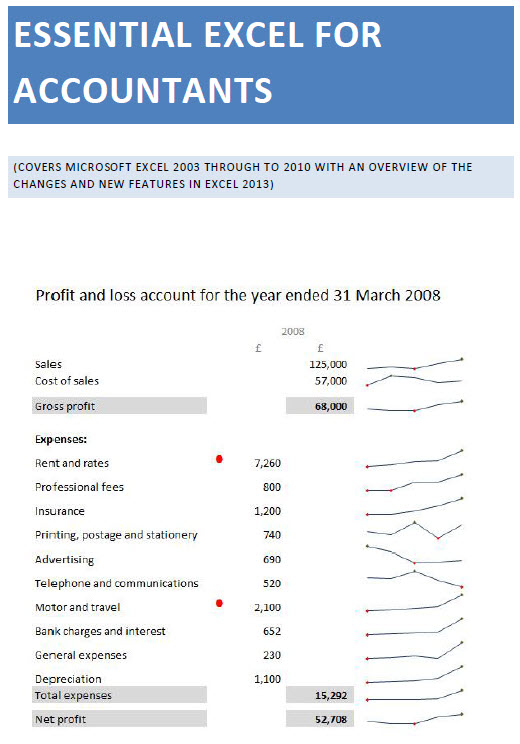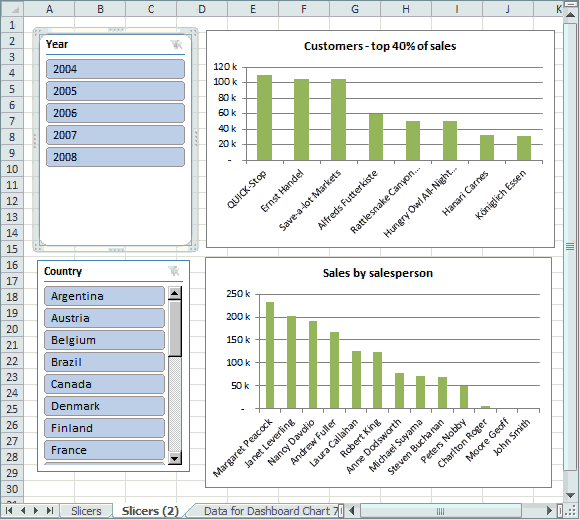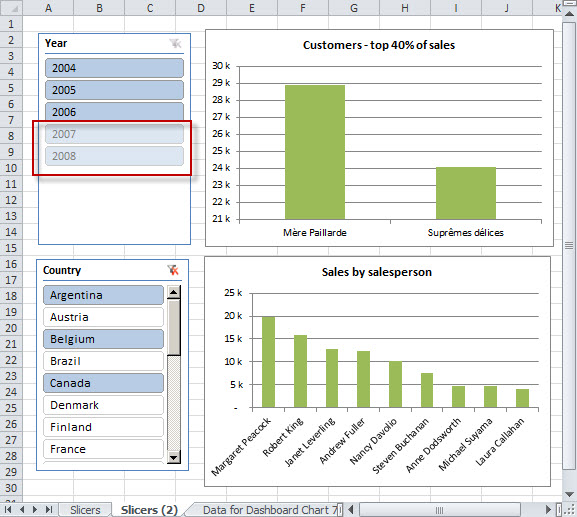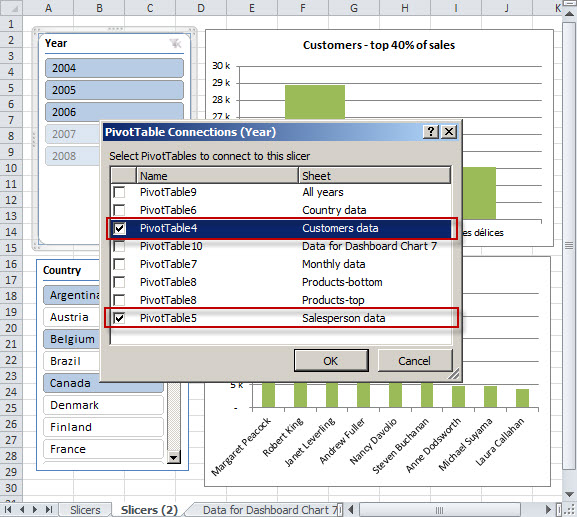
Lunchtime learning - Excel
 |
Do make sure that any tips and suggestions work as you expect them to in your own particular circumstances.
Search other Excel resources (AccountingWeb, Beancounters Guide, IT Counts):
Do Slicers cut it?
Introduction
It's easy to write Excel 2010 Slicers off as little more than a slightly more visual alternative to the PivotTable Report Filter or Page field. In fact, even if that was all they were they would be a useful enhancement, particularly when multiple fields are selected. However, Slicers capabilities extend well beyond the improved display of the items selected.
Slicers really come into their own when there is more than one Slicer attached to a PivotTable, or when multiple PivotTables are attached to one or more Slicers.

Linked Slicers
If multiple Slicers are attached to the same PivotTable(s) then each one will reflect the selections in the others. Here we see that 2007 and 2008 in our Year Slicer are 'greyed out' to show that there is no data for those years when the Country filter is set to show only Argentina, Belgium and Canada.

Useful as this is, it is probably the other Slicer capability that is more significant. Slicers can be connected to any PivotTables that are based on the same data connection. Here we have right-clicked on the Year PivotTable and chosen PivotTable Connections. We have connected the Slicer to the two PivotTables that our charts are based on. This is a good example of why it's a good idea to give PivotTables sensible names, rather than leaving them with their default PivotTablex names:

With PivotTables being the 'engine' for the concept of Excel as Business Intelligence front end, Slicers possess the crucial ability to add interactivity to a dashboard of tables and charts, without the need to resort to VBA code.
Design by Reading Room Ltd 1998